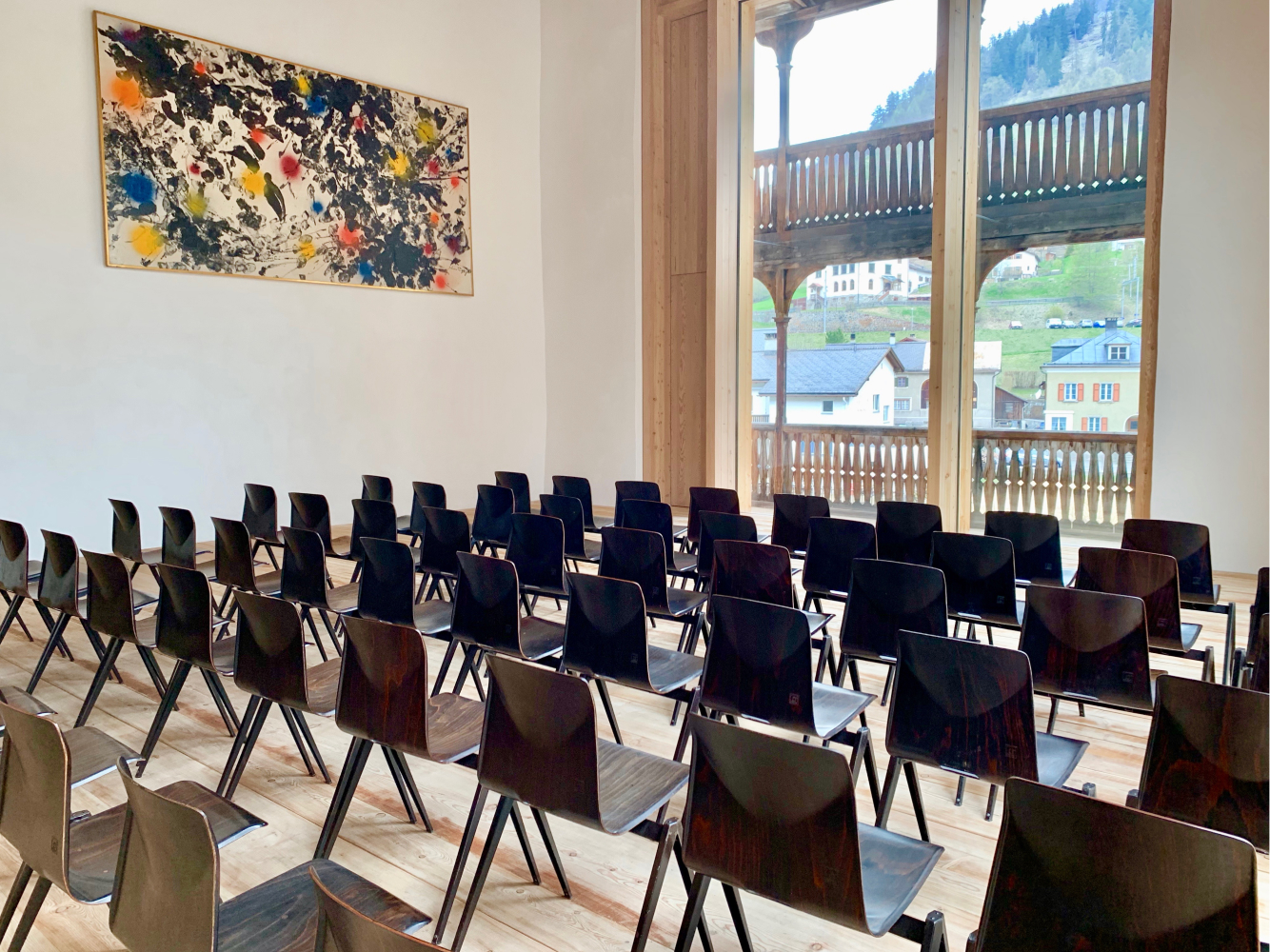→ SITE - SPECIFIC
PERMANENT INSTALLATIONS
Xanti Schawinsky
Corrida, 1956 - 1960

One of the Dance Paintings created by Swiss artist Xanti Schawinsky between 1956 and 1960 is prominently displayed in Muzuem Susch Auditorium. This particular piece, titled Corrida, draws inspiration from bullfighting, involving movements such as dancing around, leaping over, or attempting to grasp objects tied to a cow or bull's horns. The performative aspect of this undogmatically creative endeavor involves Schawinsky painting the canvas with dance steps in a spontaneous and random pattern. He theorized this practice in 1969 in an article called "Physical Painting enumerating various techniques for exploring physical mobility in painting “Number 3. Attachment of blocks to both feet and the transfer of point to a canvas by walking or dancing-permitting, through body locomotion to paint a large-size format. Number 4. Method 3 plus the use of spray-guns in both hands. Number 5. Transfer of paint by means of a roller.”
The performative aspect of the painting is directly connected to his theatrical lessons at Bauhaus. His classes were designed as synthesized "stage studies," experiential sessions involving active participation, investigation, and improvisation that constituted a comprehensive study of fundamental phenomena, encompassing space, form, color, light, sound, music, movement, time, and illusion.
Having fled the rise of the Nazi regime, Schawinsky sought refuge in Milan, spending several years engaged in commercial graphic design. An invitation to join Black Mountain College in 1936 marked a significant chapter, where he introduced Bauhaus ideas to American students before relocating to New York becoming not only an important mediator between Abstract Expressionism and Happenings but also, as his stage works from the 1920s and ’30s attest, between the visual arts and theater, between the European modernism of the Bauhaus and performance in the US.
He believes that art in his totality can be sought through greater mobilisation of the resources of the human body, and through the invention of new tools. In 1959 he created Track Paintings replacing is body used for Dance Painting with his car, symbol of the 20thcentury technological, he drove over a prepared canvas, allowing the tire tread to imprint itself on the surface in random intersecting tracks, expressing uncontrolled motion.